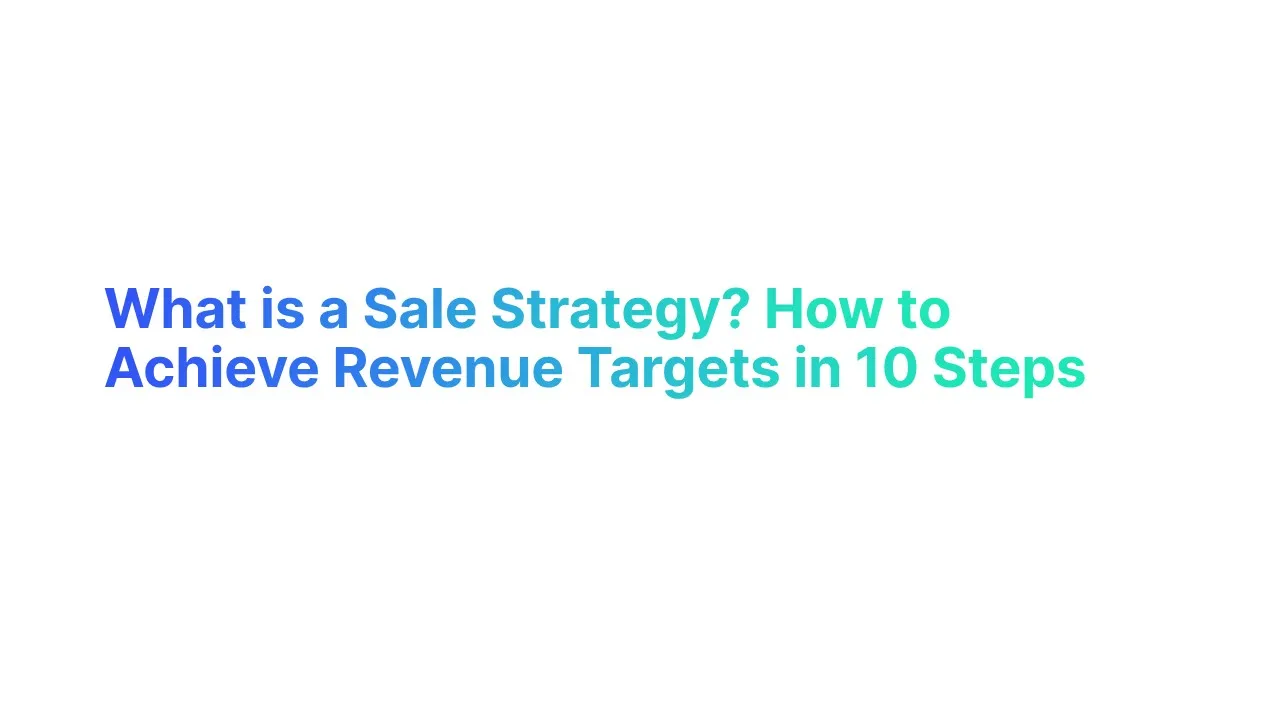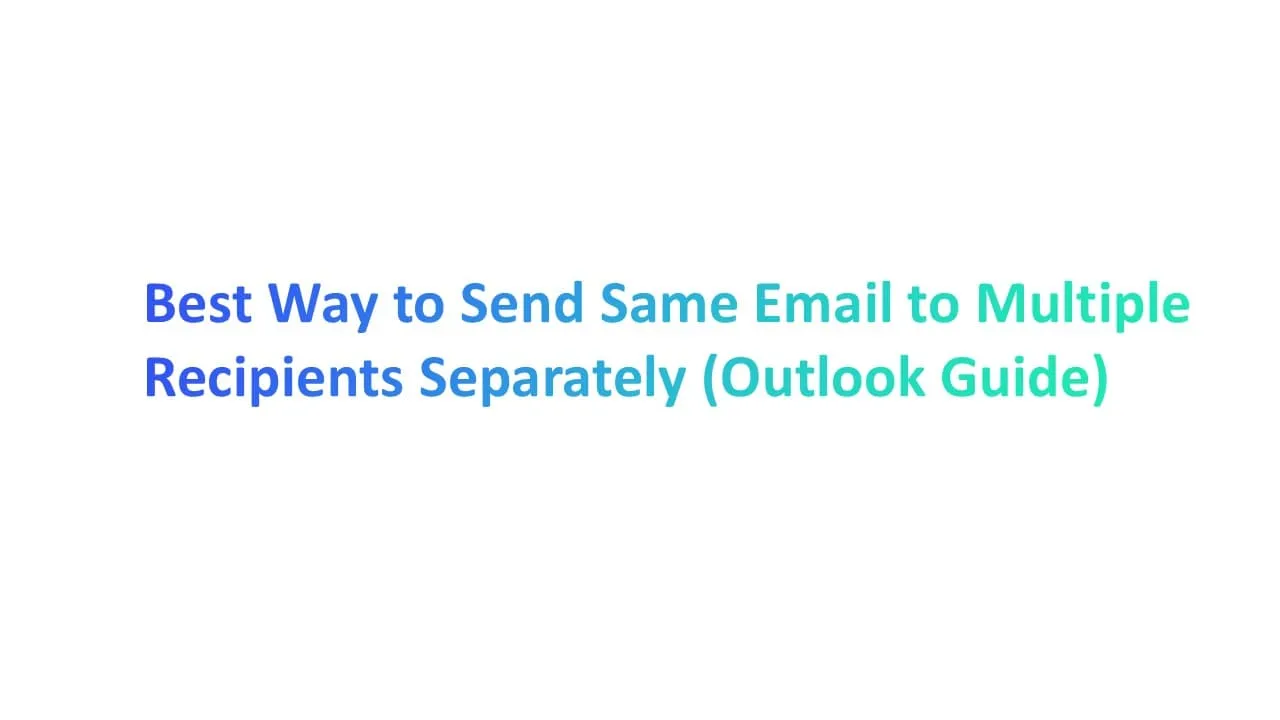Whether you want to close more deals, hit your revenue targets or just fine tune your approach, understanding a sales strategy is key.
In this guide you’ll learn what a sales strategy is and why it’s so important. We’ll take you through 10 actionable steps to create a strategy that fits into your sales process. Plus you’ll get a rundown on sales tools that will refine your team’s performance.
What is Sale Strategy?

What is a Sales Strategy?
A sales strategy is a plan that outlines how you will sell your products or services. It is a guide for your sales team to follow, showing them the best way to get to and convince potential customers.
By following this plan your team and sales leaders will know exactly what to do at every stage of the sales process.
Why is Sales Strategy Important in Your Sales Process?
An effective sales strategy is built on understanding your customers' needs and accordingly aligns your sales goals.
Your sales process involves several steps that lead a customer from first hearing about your product to making a purchase. A well-thought-out sales strategy makes each step of this process more effective.
Here are the several reasons to why it is important:
1. Reaches Your Sales Goals
- A sales strategy gives your team clear goals. It shows them what they need to achieve, whether it’s hitting a specific revenue target or increasing the number of new customers.
- When everyone knows the goal, they can work together to reach it.
Companies with well-defined sales strategies are 33% more likely to exceed their revenue goals compared to those without a sales strategy plan (Harvard Business Review).
2. Improves Sales Messaging
- Your message to customers should be clear and persuasive. The right sales strategy helps you craft a message that speaks directly to your target audience.
- It explains why your product is the best solution for their needs.
79% of buyers say it’s crucial to interact with a sales rep who is a trusted advisor, not just a sales pitch (Salesforce).
3. Builds a Strong Sales Team
- A sales strategy includes training and tools for your team.
- When your sales reps understand the strategy, they feel more confident and perform better. This leads to more sales and happier customers.
Sales teams that invest in continuous training are 50% more likely to have higher sales performance (LinkedIn).
4. Aligns Sales and Marketing Teams
- Sales and marketing should work closely together.
- A unified strategy ensures that both teams are on the same page, working towards the same goals. This alignment leads to a more efficient sales process.
Companies that align their sales and marketing teams achieve 36% higher customer retention rates and 38% higher sales win rates (Forrester).
5. Adapts to Changes
- Markets change, and your sales strategy needs to be flexible enough to adapt.
- Whether it’s new customer needs or shifts in the economy, your strategy should be able to evolve. This keeps your business competitive.
89% of top-performing companies adjust their sales strategies based on changing market conditions (Gartner).
6. Ensures Long-Term Success
- A good sales strategy isn’t just about quick wins. It’s about building relationships with customers that last.
- By focusing on long-term success, you create a loyal customer base that supports your business over time.
Businesses with strong customer relationships have 60% higher profitability over the long term (Bain & Company).
10 Key Steps to Make a Winning Sales Strategy

1. Define your Sales Goals
Defining your sales goals means setting clear and specific targets for your sales team. These goals give direction and purpose to your sales efforts.
Why It’s Important:
Without clear goals, it’s like playing a game without knowing how to win. Your team needs to know what they are aiming for. This goal helps the team stay focused and motivated.
How to Implement It:
- Be Specific: Instead of saying, "We want to increase sales," set a precise goal like, "We want to increase sales by 20% in the next 12 months."
- Make It Measurable: Ensure that your goal can be tracked with numbers or data. For example, you can measure progress by tracking monthly sales.
- Set a Timeline: Give your team a deadline to achieve the goal, such as "by the end of the year."
2. Identify your Target Customers and Market
Identifying your target customers and market means figuring out who is most likely to buy your product or service and where they are. This step is crucial because it helps you focus your efforts on the right people.
Why It’s Important:
Knowing your target customers helps you create a message that speaks directly to them. For example, if you’re selling eco-friendly products, your target market might be environmentally-conscious consumers. By focusing on this group, you increase your chances of making sales.
How to Implement It:
- Research Your Market: Look at who is buying similar products and why. Use surveys, customer data, or market reports to gather information.
- Create Customer Personas: Create detailed customer personas by profiling your ideal customers, considering factors like their age, interests, and purchasing behaviorThis helps you understand their needs better.
- Focus Your Marketing: Use the information you’ve gathered to target your marketing efforts. For example, if your target customers are young adults, you might focus on social media marketing.
3. Analyze Past Sales and Customer Data
Analyzing past sales and customer data means looking back at your previous sales records and customer information. This helps you understand what worked well and what didn’t.
Why It’s Important:
By studying past sales, you can spot trends, such as which products sold the most or which times of year are busiest. This information helps you make better decisions for the future.
How to Implement It:
- Review Sales Records: Look at your sales data to find patterns. Which products are the bestsellers? When are your peak sales periods?
- Study Customer Data: Understand who your best customers are. What do they buy? How often do they shop?
- Identify Opportunities: Use the information you’ve gathered to find new ways to increase sales. For example, if you notice that customers often buy two products together, you could offer a discount when they buy both.
4. Identify Your Unique Selling Points (USPs)
Identifying your unique selling points (USPs) means figuring out what makes your product or service different from the competition. Your USPs are the reasons why customers should choose you over others.
Why It’s Important:
Knowing your USPs helps you stand out in a crowded market. When customers see what makes you unique, they’re more likely to choose your product or service.
How to Implement It:
- List Your Strengths: Think about what your product or service does best. Is it high quality? Is it cheaper than competitors? Is it made locally?
- Compare with Competitors: Look at what your competitors are offering. What do you do better or differently?
- Highlight Your USPs: Use your USPs in your marketing and sales messaging. Make sure customers know what makes you special.
5. Develop a Sales Pipeline
A sales pipeline visually maps out the stages a potential customer progresses through before completing a purchase. It helps you track where each prospect is in the sales process.
Why It’s Important:
A sales funnel or pipeline keeps your sales team organized and focused. By knowing which stage each lead is in, your team can take the right actions to move them closer to a sale. If they’re closer to buying, the focus might be on closing the deal.
How to Implement It:
- Identify Stages: Break down your sales process into clear stages, such as "Lead Generation," "Initial Contact," "Follow-Up," and "Closing the Sale."
- Assign Tasks: For each stage, determine what actions your team should take. For instance, during the "Follow-Up" stage, the task might be to answer any remaining questions the customer has.
- Track Progress: Use tools like CRM software to track where each prospect is in the pipeline and what actions have been taken.
6. Craft a Powerful Sales Message
A sales message is the main communication you use to convince potential customers to buy your product or service. It highlights the benefits and value your product or service provides.
Why It’s Important:
A clear and persuasive sales message can make all the difference in convincing a prospect to become a customer. The right message speaks directly to the customer’s needs and explains why your product is the best choice for them.
How to Implement It:
- Know Your Audience: Understand who your target customers are and what they care about. This will help you tailor your message to resonate with them.
- Focus on Benefits: Highlight the specific benefits that your product or service offers. For example, instead of saying, "Our software is easy to use," say, "Our software saves you 5 hours a week by automating tasks."
- Keep It Simple: Your message should be easy to understand. Avoid jargon and focus on what matters most to your customers.
7. Implement Outbound and Inbound Sales Strategies
Outbound and inbound sales strategies are two different approaches to selling. Outbound sales involve reaching out to potential customers directly, like through cold calls or emails.
Inbound sales professionals, on the other hand, focus on attracting customers who are already interested, often through content marketing or social media.
Why It’s Important:
Using both strategies can help you reach a wider audience. Outbound sales allow you to target specific potential customers, while inbound sales attract those who are already looking for your product or service.
How to Implement It:
- Outbound Sales: Start by identifying your target customers and create a list of prospects. Reach out to them through cold calls, emails, or social media messages.
- Inbound Sales: Create valuable content like blog posts, videos, or social media updates that attract potential customers to your website. Use SEO (search engine optimization) to make sure your content ranks high in search results.
- Measure Results: Track the success of both strategies to see which one brings in more leads and adjust your approach accordingly.
8. Choose the Right Sales Channels
Sales channels are the different platforms or methods you use to sell your product or service. This could be through a physical store, online store, social media, or through partnerships with other businesses.
Why It’s Important:
Choosing the right sales channels ensures that your product reaches the right customers where they are most likely to buy. For example, if your target market is teenagers, selling through social media might be more effective than through a physical store.
How to Implement It:
- Know Your Customers: Understand where your customers spend their time. Do they shop online, in stores, or through social media?
- Test Different Channels: Try selling your product through various channels to see which ones work best.
- Focus on What Works: Once you know which channels bring in the most sales, focus your efforts there.
9. Use Sales Tools and Technology
Sales tools and technology include software and platforms that help your sales team work more efficiently. Few examples are Customer Relationship Management (CRM) systems, email marketing tools, and data analytics software.
Why It’s Important:
These tools make it easier to manage customer relationships, track sales activities, and analyze data. For instance, a CRM system helps you keep track of all interactions with potential customers and existing customers.
How to Implement It:
- Choose the Right Tools: Select tools that match your sales process. If you’re focused on email marketing, an email automation tool might be essential.
- Train Your Team: Make sure your sales team knows how to use the tools effectively. Offer training sessions if necessary.
- Monitor and Adjust: Regularly check if the tools are helping you reach your sales goals. If not, consider switching to more effective solutions. Tracking sales success helps your team stay motivated and focused on achieving targets.
10. Set a Budget
Setting a budget means deciding how much money you will spend on your sales and marketing strategy. This includes costs for sales tools, marketing campaigns, staff salaries, and more.
Why It’s Important:
A budget helps you allocate resources wisely and ensures that you don’t overspend. By setting a clear budget, you can plan your sales strategy more effectively and avoid surprises later on.
According to a study by Deloitte, companies with a well-planned budget are 30% more likely to achieve their financial goals.
How to Implement It:
- List All Costs: Start by listing all the expenses related to your sales strategy. This includes software, salaries, marketing materials, and more.
- Prioritize Spending: Decide which areas are most important and allocate more funds to them. For example, if lead generation is a top priority, you might spend more on marketing campaigns.
- Monitor Spending: Keep track of your expenses and make sure you’re staying within your budget. Adjust as needed if you find certain areas are costing more than expected.
Types of Sales Strategies
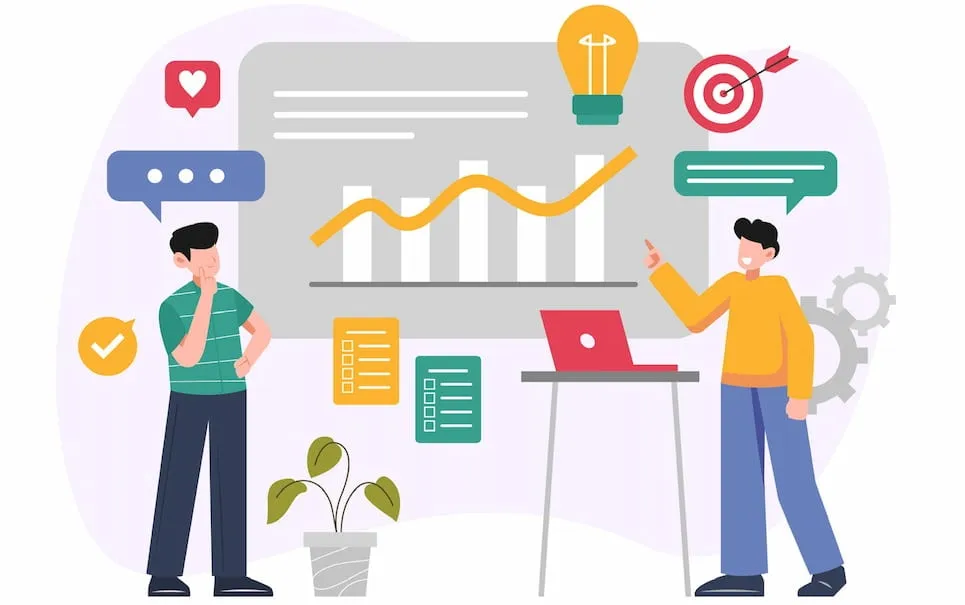
1. Inbound Sales Strategy
An inbound sales strategy is about attracting customers to you. Instead of going out to find them, you create content and resources that draw them in.
This strategy uses tools like blogs, social media, and videos to attract people who are already interested in what you offer.
Here's how it works:
- Create Helpful Content: Write articles, make videos, or create guides that answer common questions your customers might have.
- Use SEO: Make sure your content is easy to find by using the right keywords. This helps your business show up when people search online.
- Engage on Social Media: Share your content on platforms like Facebook, Instagram, or Twitter to reach more people.
Example: If you run a pet store, you might write blog posts about pet care. People who are looking for pet advice find your blog and visit your store.
2. Outbound Sales Strategy
An outbound selling strategy is when you reach out to customers directly. Instead of waiting for them to come to you, you go to them.
This strategy involves cold calls, emails, or direct messages to potential customers. Outbound strategies can be very effective, especially for reaching new customers quickly.
Here's how it works:
- Identify Your Target Audience: Know who your potential customers are and how to reach them.
- Craft a Clear Message: When reaching out, be clear about how your product or service can help them.
- Follow Up: Don’t just reach out once. Follow up to keep the conversation going.
Example: Imagine you’re a software company. Your sales team might call businesses to offer a demo of your product.
3. Relationship-Driven Sales Strategy
A relationship-driven sales strategy is about building strong connections with your customers. The goal is to have sales conversations that create trust and keep customers coming back.
This strategy focuses on getting to know your customers, understanding their needs, and providing personalized service.
Here's how you can do it:
- Get to Know Your Customers: Take time to learn about their preferences and needs.
- Offer Personalized Service: Make your customers feel special by offering products or services tailored to them.
- Keep in Touch: Regularly check in with your customers, whether it’s through emails, special offers, or just a friendly message.
Example: A local coffee shop might remember your favorite order and have it ready when you walk in.
4. Solution-Focused Sales Strategy
A solution-focused sales strategy is all about understanding the customer’s problem and offering a product or service that solves it. This strategy works by first identifying the customer’s needs and then tailoring your offer to meet those needs.
Here's how to do it:
- Ask Questions: Start by asking the customer about their challenges. For example, if you’re selling software, ask what problems they are trying to solve with technology.
- Present the Solution: After listening, explain how your product addresses their specific issues.
- Use Examples: Share stories or case studies where your product has helped others with similar problems.
5. Product-Led Sales Strategy
A product-led sales strategy focuses on letting the product itself do the selling. This means that the main emphasis is on how the product works and the value it brings to customers.
This strategy is all about showing the product in action. Customers are more likely to buy something when they can try it first.
Here's how to do it:
- Offer Free Trials: Allow customers to use your product for a limited time to see how it benefits them.
- Highlight Key Features: Focus on what makes your product unique and valuable.
- Gather Feedback: Use customer feedback from the trial period to improve your product.
Example: You can offer free trials or demos to let customers experience the product before buying.
6. Consultative Sales Strategy
A consultative selling strategy is about helping customers make the best decision. Instead of just selling a product, you act as a trusted advisor. In this strategy, you listen to the customer’s needs and offer advice on the best solution.
Here's how it do it:
- Ask Open-Ended Questions: Find out what challenges the customer is facing.
- Provide Tailored Advice: Suggest products or services that solve their specific problems.
- Follow Up: Check in after the sale to ensure the customer is happy and offer additional support if needed.
Example: If you’re selling marketing services, you might first learn about the customer’s goals, then suggest a plan that fits their needs.
7. Value-Based Sales Strategy
A value-based selling strategy focuses on the benefits your product or service provides, rather than just its features or price. The goal is to show the customer how your offering will deliver value. Customers are more likely to buy if they see the value.
Here's how to do it:
- Identify Key Benefits: Understand what your customers value most, such as time savings or improved efficiency.
- Communicate the Value: Explain how your product or service will benefit the customer in real terms.
- Use Real Examples: Share stories or testimonials that show the value your product has provided to others.
Example: Instead of saying, “This software costs $100,” you say, “This software will save you 10 hours a week in manual work.” You highlight the value it brings.
8. Account-Based Sales Strategy
An account-based sales strategy is tailored to target specific high-value customers. This strategy focuses on a small number of key accounts, offering personalized solutions that meet their unique needs.
Focusing on high-value accounts can lead to bigger deals and stronger customer relationships.
Here's how you can do it:
- Research the Account: Learn everything you can about the company’s needs and goals.
- Customize Your Approach: Tailor your sales pitch, demo, and proposal to address the specific needs of the account.
- Build a Long-Term Relationship: Focus on providing value over time, not just making a one-time sale.
Example: If you sell enterprise software, you might create a custom demo and proposal for a large corporation.
9. Collaborative Sales Strategy
A collaborative sales strategy is all about working together with your customers to find the best solution.
Instead of just selling a product, you partner with the customer to understand their needs and create a solution together. Collaboration builds strong relationships. Customers appreciate when they are part of the process.
Here's how it works:
- Engage the Customer Early: Involve the customer in the planning stage to understand their specific needs.
- Co-Create Solutions: Work together with the customer to develop a product or service that meets their requirements.
- Keep Communication Open: Regularly check in with the customer to ensure their needs are being met.
Example: If you’re selling custom-made furniture, you might collaborate with the customer to design the perfect piece.
10. Channel Sales Strategy
A channel sales strategy involves selling products through third-party partners or distributors. This powerful sales strategy extends your reach by using other companies to help sell your product.
Instead of selling directly to customers, you partner with other businesses that will sell your product for you. Using channel partners allows you to reach a wider audience without having to build the infrastructure yourself.
Here's how to do it:
- Select the Right Partners: Choose partners that align with your brand and can effectively sell your product.
- Provide Support: Offer training and resources to help your partners sell your product successfully.
- Monitor Performance: Keep track of your partners’ sales performance and offer assistance when needed.
Example: A phone manufacturer might sell its products through various retail stores.
Sales strategies examples can offer valuable insights when tailoring your own approach.
Sales Tools for Effective Sales Team Performance
1. Customer Relationship Management (CRM) Software
CRM software is a tool that helps your sales team manage interactions with both existing customers and potential customers. It keeps track of every conversation, email, and meeting in one place.
Salesforce

Salesforce is one of the most used CRM tools in the world. It helps you store customer data, track interactions, and manage sales processes. With Salesforce, your sales team can easily find out what customers need and when they need it.
Why is it important:
Using Salesforce is important because it helps your sales team work smarter, not harder. By having all the customer information in one place, your team can provide better service and close more deals.
How to use it:
- Start by entering your customer data into Salesforce. This includes contact information, past sales, and any notes about customer needs.
- Then, use Salesforce to keep track of customer interactions and follow up when necessary.
- This will help you build strong relationships with your customers.
HubSpot

HubSpot is another great CRM tool. It’s user-friendly and offers a free version, which is perfect for small teams. HubSpot helps you manage your sales pipeline, track emails, and even automate tasks like sending follow-up emails.
Why is it important:
HubSpot is important because it’s easy to use and helps your team stay organized. With HubSpot, you can see exactly where each customer is in the sales process, which makes it easier to close deals.
How to use it:
- Set up your sales pipeline in HubSpot and add your customer contacts.
- You can then track each interaction, set reminders for follow-ups, and even automate emails.
- This helps ensure that no customer falls through the cracks.
2. Sales Automation Tools
Sales automation tools are software that automates repetitive tasks, like sending follow-up emails, scheduling meetings, or updating customer records.
Calendly

Calendly is a tool that makes scheduling meetings easy. Instead of going back and forth to find a time that works, you can send a link where customers can pick a time that suits them.
Why is it important:
Calendly is important because it saves time. When scheduling is easy, your sales team can spend more time closing deals and less time managing their calendars.
How to use it:
- Set up your availability in Calendly and share the link with your customers.
- When they pick a time, it automatically adds the meeting to your calendar.
- This makes scheduling hassle-free for both you and your customers.
Mailchimp
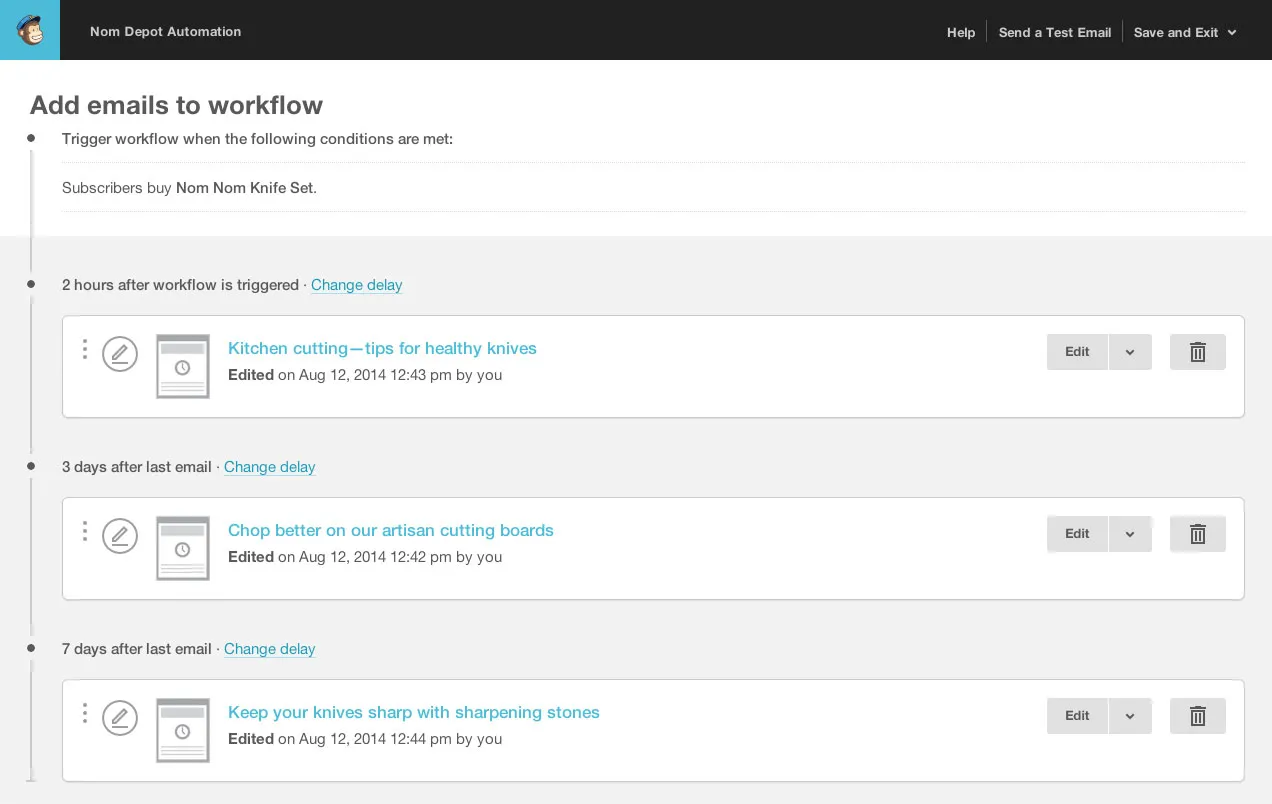
Mailchimp is an email marketing tool that helps you send out emails to large groups of customers at once. It’s great for sending newsletters, promotional offers, or follow-up emails.
Why is it important:
Mailchimp is important because it helps you stay in touch with your customers without spending hours writing individual emails. With Mailchimp, you can send personalized messages to different customer groups, making your sales strategy more effective.
How to use it:
- Create an account on Mailchimp and upload your customer list.
- Then, create email campaigns tailored to your customers' needs.
- You can automate these emails to go out at the best times, ensuring that your customers always hear from you at the right moment.
3. Lead Generation Tools
Lead generation tools help you find and attract new potential customers. These tools are designed to gather information about people who might be interested in your product or service.
LinkedIn Sales Navigator

LinkedIn Sales Navigator is like a super-powered version of LinkedIn. It helps you find the right people to connect with.
You can search for potential customers using filters like job title, industry, and location. This tool is great because it helps you focus on the people who are most likely to buy your product or service.
Why is it important:
Using LinkedIn Sales Navigator is important because it saves you time. Instead of guessing who might be interested in your product, you can target the right people from the start. This makes your sales team more efficient.
How to use it:
- First, set up your filters to find the type of people you want to reach.
- Then, start connecting with them. You can send them a message introducing yourself and explaining how your product or service can help them.
- This personal approach can lead to more sales.
Hunter.io

Hunter.io is another great tool for finding potential customers. It helps you find email addresses quickly. All you need to do is enter a company’s website, and Hunter will give you a list of email addresses associated with that company.
Why is it important:
Having the right email addresses means you can reach out directly to decision-makers. This can help your sales and marketing team connect with people who have the power to make purchasing decisions.
How to use it:
- Simply enter the domain name of the company you’re interested in, and Hunter.io will show you the email addresses.
- Then, you can email these people with information about your product or service.
- Remember to keep your emails short and to the point, focusing on how your product can solve their problems.
4. Sales Analytics Tools
Sales analytics tools help you understand how well your sales strategy is working by analyzing data from your sales activities. These tools can track metrics like conversion rates, sales cycle length, and sales team performance.
Tableau
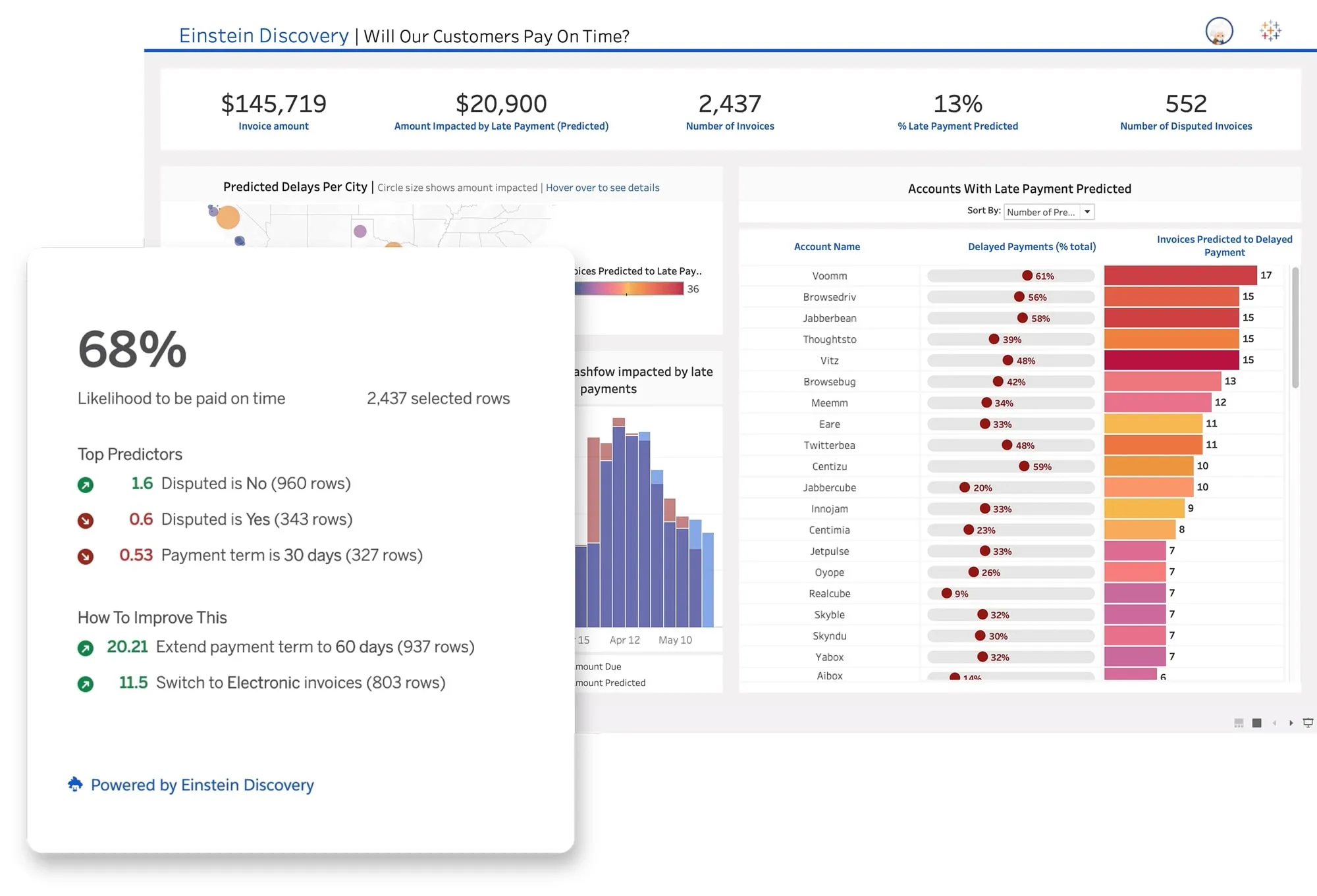
Tableau is a tool that turns your sales data into visual reports. It’s like having a dashboard that shows you how well your sales strategy is working. With Tableau, you can see which products are selling the most, which customers are buying the most, and where your sales team can improve.
Why is it important:
Using Tableau is important because it gives you a clear picture of your sales performance. When you can see what’s working and what’s not, you can adjust your sale strategy to be more effective.
How to use it:
- Start by connecting Tableau to your sales data.
- Then, create reports that show key metrics, like sales growth and customer trends.
- Use these reports to spot opportunities for improvement and share them with your sales team.
Microsoft Power BI

Microsoft Power BI is another tool that helps you analyze your sales data. It’s similar to Tableau but integrates well with other Microsoft products. With Power BI, you can create interactive reports and dashboards that help you track your sales process.
Why is it important:
Power BI is important because it helps you make data-driven decisions. By understanding your sales data, you can create a successful sales strategy that leads to more sales and better customer relationships.
How to use it:
- Connect Power BI to your sales data, and start creating reports that highlight key areas of your sales performance.
- Use these insights to make informed decisions and guide your sales team to success.
Conclusion
Using the right sale strategy is key to your success. Whether you focus on your sales process, sales team, or choosing the best sales tools, it’s all about finding what works for you. Remember, every step you take in refining your sales strategy brings you closer to achieving your goals.
Stay focused, keep learning, and watch your sales grow. By applying these strategies, you’ll not only improve your performance but your sales department will also build stronger relationships with your customers.

